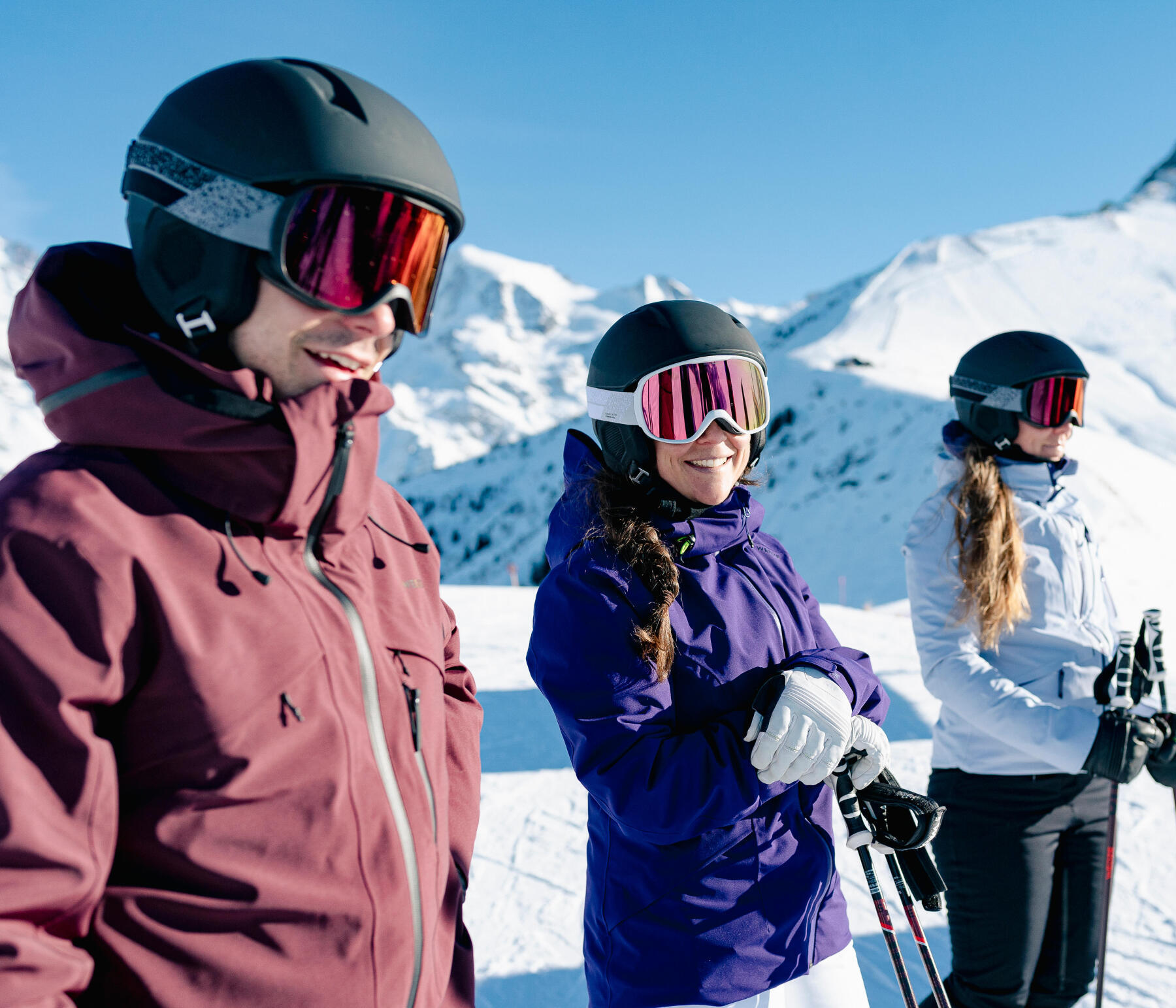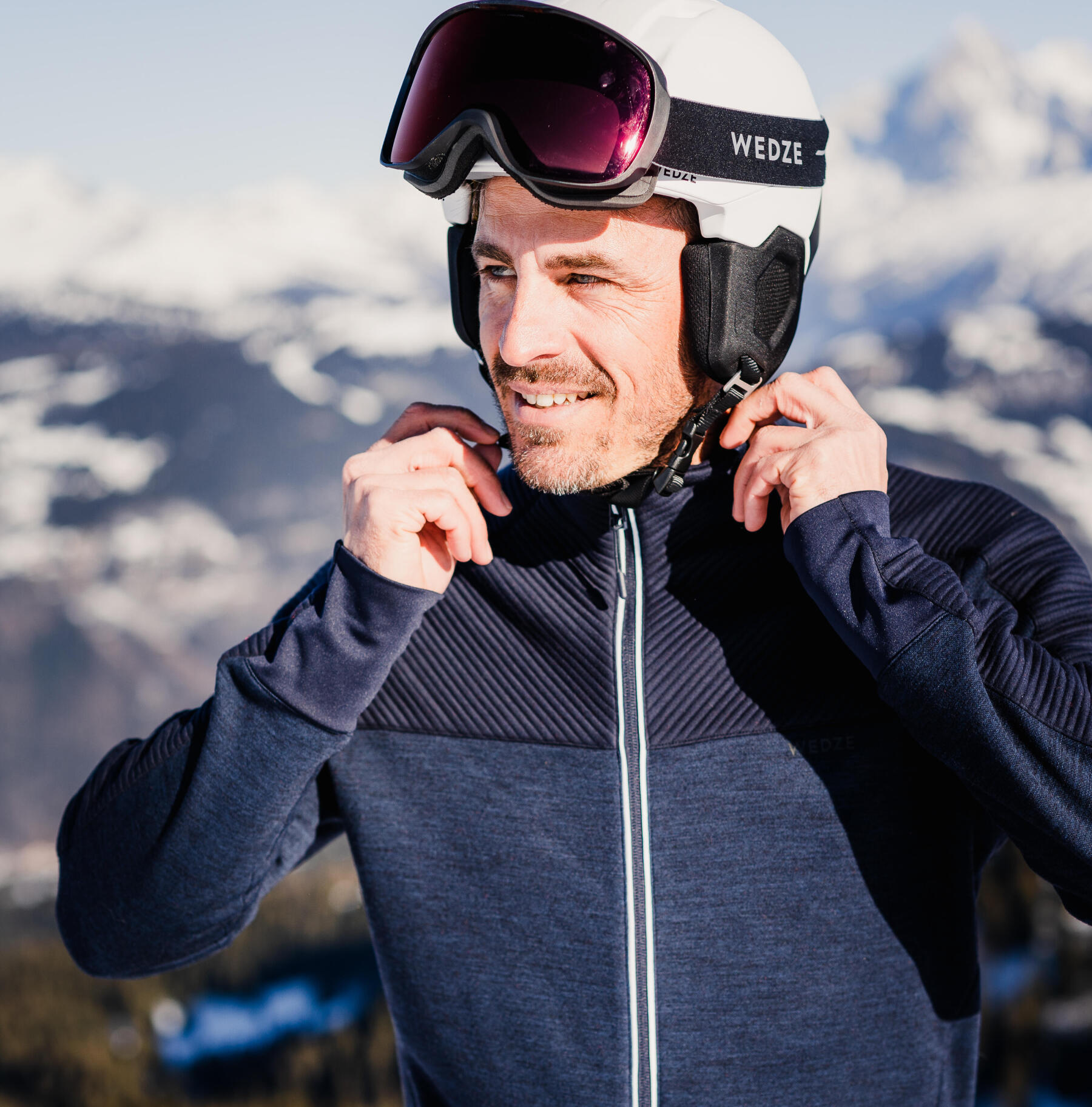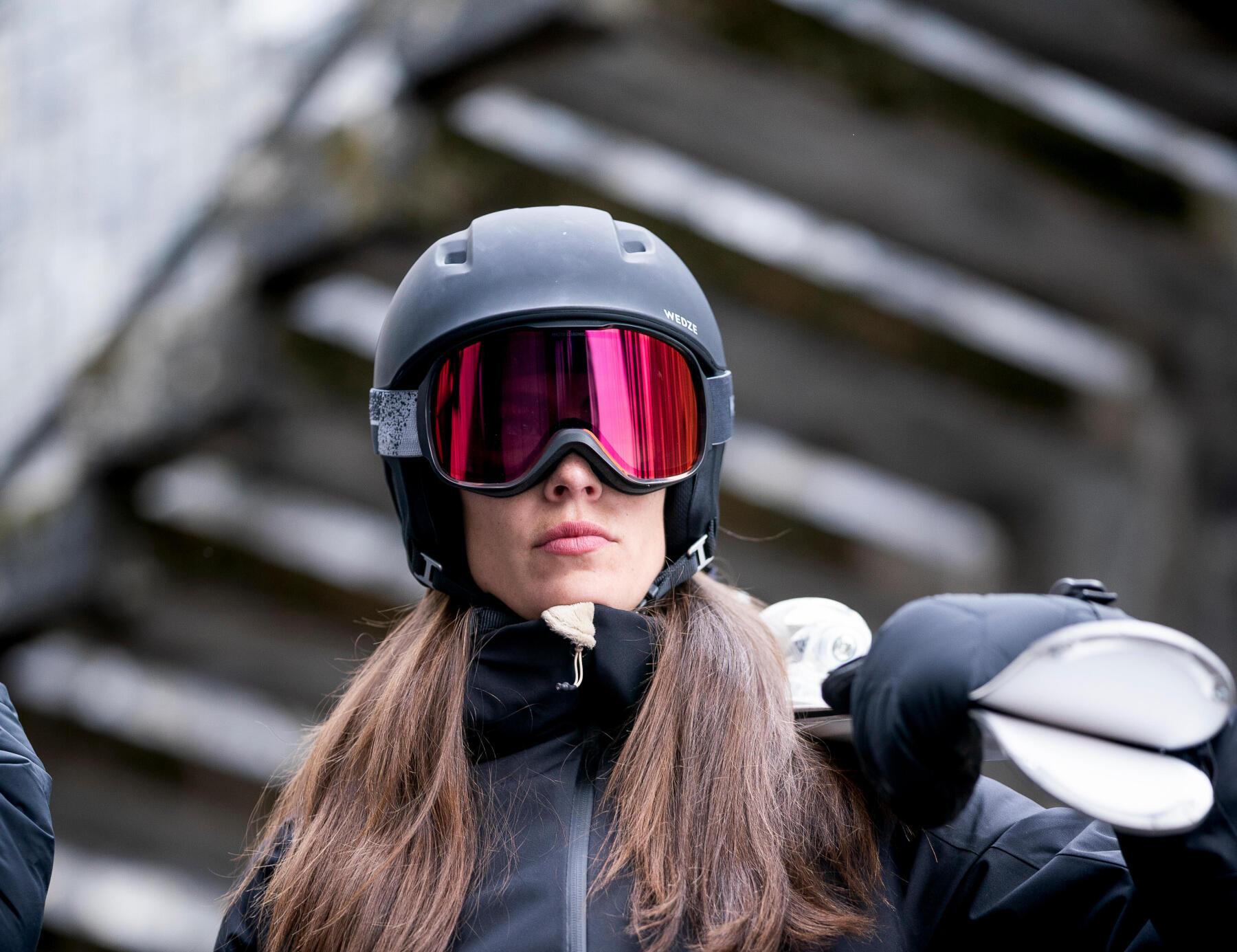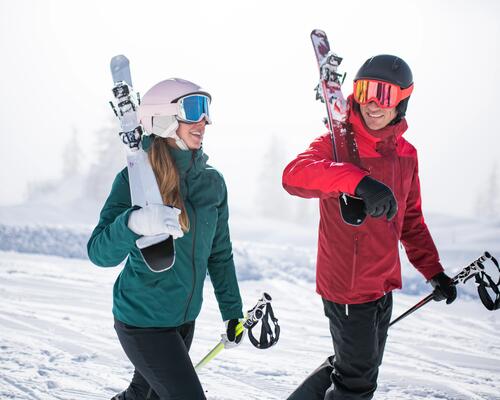1. Layer up when getting dressed: the best way to keep warm
Ski jackets and ski trousers
Your ski jacket is your first line of defence against the cold. For those who feel the cold or who enjoy frequent ski sessions in cold climates, a ski jacket with a waterproof outer layer and a padded inner layer is an excellent choice.
The downside is that these layers aren't so breathable and versatile when the temperatures begin to warm up, but they're an excellent way to keep warm on cold days.
Then, the choice of your ski trousers can also have an impact on your warmth. Most people focus on the upper body more than the lower body when dressing for a ski trip, and ski trouser options are more limited than the jacket ranges on offer. However, this doesn't have to prevent you from keeping warm.
Similarly to ski jackets, many skiers wear non-thermal ski trousers, which are pretty thick, and instead focus on a warm base layer instead. With thick thermal trousers and ski socks covering your lower legs, you'll definitely be warmer.













